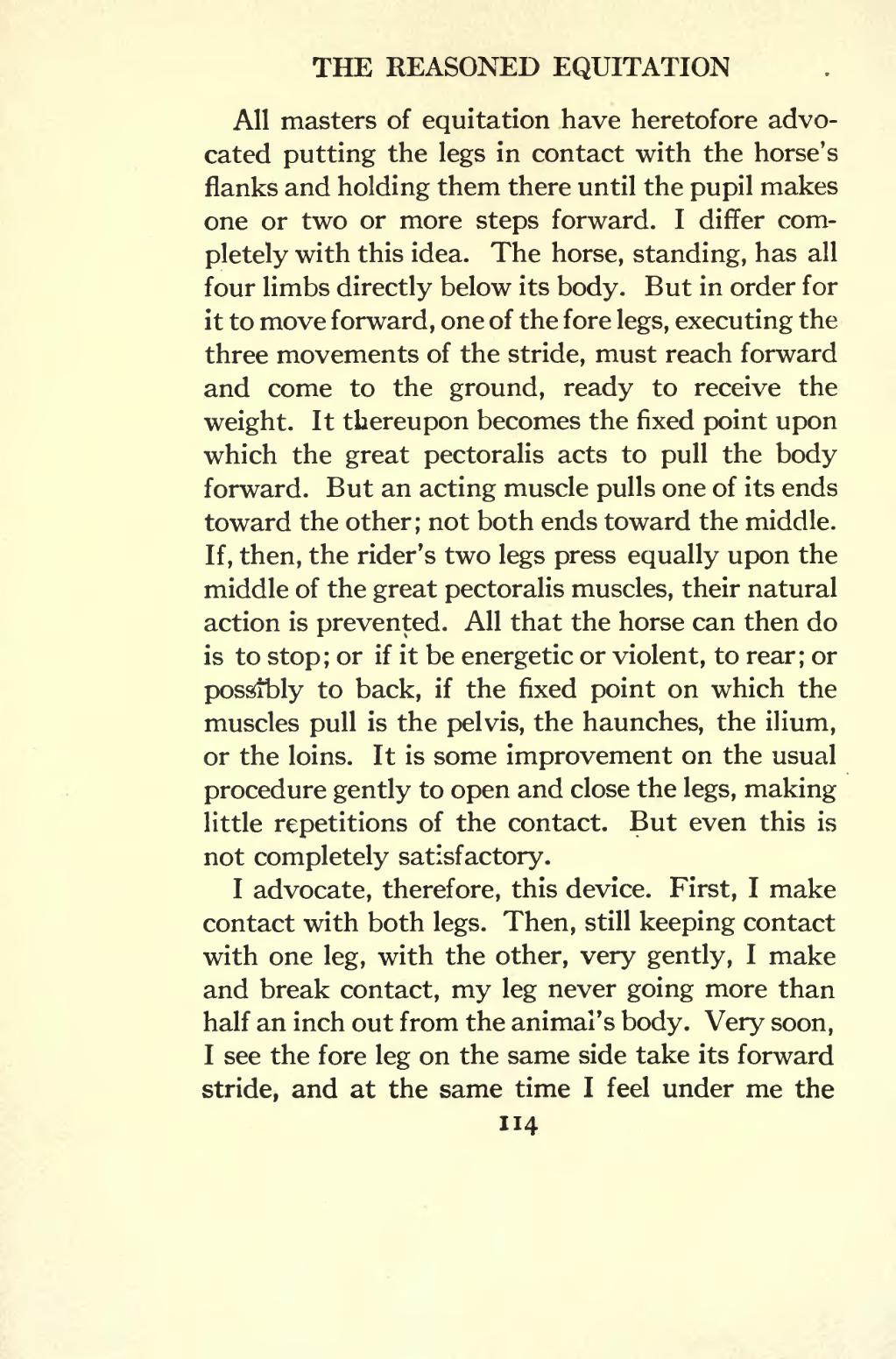All masters of equitation have heretofore advocated putting the legs in contact with the horse's flanks and holding them there until the pupil makes one or two or more steps forward. I differ completely with this idea. The horse, standing, has all four limbs directly below its body. But in order for it to move forward, one of the fore legs, executing the three movements of the stride, must reach forward and come to the ground, ready to receive the weight. It thereupon becomes the fixed point upon which the great pectoralis acts to pull the body forward. But an acting muscle pulls one of its ends toward the other; not both ends toward the middle. If, then, the rider's two legs press equally upon the middle of the great pectoralis muscles, their natural action is prevented. All that the horse can then do is to stop; or if it be energetic or violent, to rear; or possibly to back, if the fixed point on which the muscles pull is the pelvis, the haunches, the ilium, or the loins. It is some improvement on the usual procedure gently to open and close the legs, making little repetitions of the contact. But even this is not completely satisfactory.
I advocate, therefore, this device. First, I make contact with both legs. Then, still keeping contact with one leg, with the other, very gently, I make and break contact, my leg never going more than half an inch out from the animal's body. Very soon, I see the fore leg on the same side take its forward stride, and at the same time I feel under me the
